MASS Meeting Notes for November 16, 2018
I started the meeting with a cool picture from the Hubble Space Telescope.
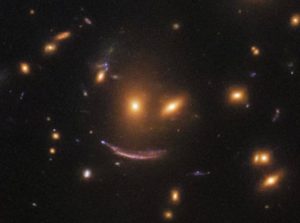 The smile is the distorted image of a galaxy behind the two eyes which has had its light bent by the gravity of the foreground galaxies. The photo was taken with the Wide Field Camera 3 which astronauts installed during the last servicing mission in 2010. Hubble has had some trouble recently. In early October, one of the gyroscopes failed and when the last backup gyro was started, it acted weird. Scientists did the equivalent of what we do at home when equipment doesn’t work, they turned in off and on and electronically kicked it from side to side. Fortunately, the procedure fixed the issue and by month’s end Hubble was back doing science. Hubble has been lucky to have 5 servicing missions by the Space Shuttle since it was deployed in 1990. The last mission left the telescope with 6 working gyroscopes. The telescope needs 3 gyros to do its best science. It only has the 3 working gyros left. Let’s hope that they will last until the James Webb Space Telescope (JWST) launches in March 2021.
The smile is the distorted image of a galaxy behind the two eyes which has had its light bent by the gravity of the foreground galaxies. The photo was taken with the Wide Field Camera 3 which astronauts installed during the last servicing mission in 2010. Hubble has had some trouble recently. In early October, one of the gyroscopes failed and when the last backup gyro was started, it acted weird. Scientists did the equivalent of what we do at home when equipment doesn’t work, they turned in off and on and electronically kicked it from side to side. Fortunately, the procedure fixed the issue and by month’s end Hubble was back doing science. Hubble has been lucky to have 5 servicing missions by the Space Shuttle since it was deployed in 1990. The last mission left the telescope with 6 working gyroscopes. The telescope needs 3 gyros to do its best science. It only has the 3 working gyros left. Let’s hope that they will last until the James Webb Space Telescope (JWST) launches in March 2021.
Next up was a short video that is the first 8K video created on the ISS. It just gives you a sense of how much equipment and experiments are going on up there. When all 4 walls, the floor and the ceiling can be used, the complexity density gets very high. Some of the cabling on the ISS is starting to make my office wiring look like a neat job.
NASA on Oct 1st it celebrated its 60th anniversary. I never knew that Neil deGrasse Tyson was born within a week of that date on Oct 6, 1958, so they effectively share a birthday. Tyson read an emotional letter he wrote to NASA at the New York Comic-Con describing how NASA became more inclusive over the decades. I know that I got verklempt watching it. Another recent anniversary was the launching of Sputnik 61 years ago on Oct 4, 1957. I still remember walking down an alley in Milwaukee with my parents and seeing it pass overhead. Recent stories now say that people were seeing the booster from the rocket rather the probe itself, but it still worried the entire nation to see that Russian stuff going overhead.
NASA also celebrated the 20th anniversary of the launch of the first component of the ISS, Zarya, by the Russians on November 20, 1998. We also passed the 18th year of continuous occupation of the ISS on November 2nd.
There has been a bevy of Black Hole (BH) lectures recently. Rob Owen of Oberlin College in Ohio gave a nice talk at Triton College on Sep 15. Professor Owen was a student of Kip Thorne, who recently shared the 2017 Nobel Prize for Physics for the discovery of gravity waves. Harry, Silvio and I attended the other BH lecture at the College of DuPage (COD) given by Joe DalSanto. Driving home in the car after the COD talk, I thought of the brilliant question, “Can gravity waves escape from a BH?”. The Internet has told me, no. But then it is described in one of the LIGO gravity wave detections, that they say it was a merger of a 36 and 29 solar mass BH’s that formed a 62 solar mass BH with 3 solar masses being converted to gravity wave energy. How did the 3 solar masses escape from the BH’s to form gravity waves? If anyone wants to weigh in with an answer, it would be much appreciated.
Fun facts about BH’s, the sun would make a 4 mile diameter BH, the earth a 1 inch one. The Milky Way has a 4 million solar mass supermassive BH at its center. The Andromeda galaxy has a 100 million solar mass BH. The most massive found so far is in a small galaxy called NGC 1277 250 million light-years away and weighs in a 17 billion solar masses. A BH has only 2 important characteristics, its mass and its spin.
In recent observing, Carol and I went back to our childhood hometown, Cudahy, Wisconsin, to watch the Perseid meteor shower. We observed the planets the night of August 12, 2018 from her brother’s back yard. We saw Venus, Jupiter, Saturn and Mars but had to fight the dew and mosquitos. We ventured back out the morning of August 13 to observe meteors from 2-3 AM. The sky glow of Milwaukee is much worse than I remember it even though we were only 3 blocks from Lake Michigan. I only saw 5 meteors, Carol saw 3 and her brother saw 6. The most interesting object we saw was a 2:45 AM. Something was moving across the sky getting very bright (about magnitude 0) for a couple of seconds then become too dim to see for about 6 seconds and then repeat. I quickly opened Sky Guide on my Iphone and held it up to the object and identified the mysterious object as a Japanese H-IIA rocket body. The tumbling action of the cylindrical shaped rocket caused the reflected light from the sun to vary as it did. Observing of satellites is a good hobby for those affected by strong city lights. Carol and I have seen 3 Iridium satellite flares recently. Two in September and one in October. The flare only lasts a couple of seconds but if you check the predictions (Sky Guide app for Iphone), you know where to look and when down to the second. The flares we saw were magnitude -2.4 to -2.7 which is 3 times brighter than the brightest star, Sirius at magnitude -1.5. If you want to try Iridium flares as a hobby, you’ll have to do it soon. SpaceX is scheduled to complete the new constellation of Iridium satellites by the end of 2018. This new set of satellites won’t flare like the old ones because they don’t have the same shaped antennas.
After a two and a half year break, I also completed my 26th Internet course, “Understanding Einstein’s Special Relativity” from Stanford University. Nineteen of the courses have been from coursera.org and seven from edx.org. If only the speed of light was additive like when you throw a ball from a moving car, we wouldn’t have all these weird relativity effects such as length contraction, time dilation and non-simultaneity of events for different observers. I also completed the “Space Advocacy” course from Casey Drier of the Planetary Society. I understand much better the intricate process that occurs between the House, Senate and White House in funding NASA and setting its priorities.
We discussed a couple of recent TMRO (pronounced tomorrow) shows. TMRO Orbit 11.38 dealt with space law. I learned that using a nuclear bomb for asteroid protection is against international law at the moment. You also have to register all your space objects with the UN. Debris cleanup and satellite servicing can be perceived to be threatening by other countries. So far, only the US and Luxemburg have laws that say their companies can own and sell asteroid resources. Enforcement of space law is implemented through peer pressure and economic sanctions. All objects in space are still the property of the launching country even if the object is not functioning. All missions from a country are considered national and the country is responsible. The US is responsible for all SpaceX launches and even the Rocket Lab launches from New Zealand because it is a US company. If an object falls to the ground, you must try to get it back to the launching organization. It is illegal to put nuclear weapons into orbit or store them on celestial bodies.
The other interesting show was TMRO Orbit 11.39. It dealt with a Japanese company, Astro Live Experience (ALE), which plans to produce artificial shooting stars of several colors. The are scheduled to launch their 70 kg demonstrator satellite in December 2018. It will be the size of a refrigerator and will contain 400 “stars”. Each 1 cm “star” will burn several times brighter than Sirius and will be observable from a 200 km circle on the Earth. The first planned show will be in 2020 over Japan (maybe for the Olympics or a Disney Park in Tokyo). The “stars” burn up 60-80 km high and a show would include 15-20 stars. I guess having commercial space ventures is good to stir up interest, but I’m a little concerned about how to regulate it once the cat is out of the bag.
Keith and I were able to attend the kickoff of MASS member, Beth Mund’s, podcast “Casual Space” on November 2. Beth’s announcement came before her exclusive showing of the movie, “First Man” at the St. Charles theater. During the pre-movie festivities there even was an appearance by Freddie Mercury (Chad Mund) but he soon realized he was supposed to be at the “Bohemian Rhapsody” movie a couple of doors down the hall. I’ve listened to the first five episodes and found them very entertaining. Episode 4 is an interview with COD astronomer Joe DalSanto and how his career path led him to astronomy.
by Freddie Mercury (Chad Mund) but he soon realized he was supposed to be at the “Bohemian Rhapsody” movie a couple of doors down the hall. I’ve listened to the first five episodes and found them very entertaining. Episode 4 is an interview with COD astronomer Joe DalSanto and how his career path led him to astronomy.
No MASS meeting can go without talking about SpaceX accomplishments. With the launch on 11/15/18 of the Es’hail 2 satellite for Qatar, SpaceX has matched their yearly record of 18
missions. There have been 62 successful Falcon 9 launches with 6 being the latest Block 5 variation. A total of 17 first stage cores have been reused for a second launch and 31 cores have been recovered either thru land landings, 12, or barge landings, 19. On Oct 17, SpaceX made their first land landing in California at the Vandenberg Air Force Base. But not before having to test sonic booms on seals. SpaceX is still restricted from landings during the pup rearing season. They are scheduled to try to squeeze in 4 more launches in 2018. On a positive note the Falcon 9 has just been certified by NASA to launch their most critical missions. If the Falcon Heavy gets 2 more successful launches in 2019, it might also achieve that status. Morgan Stanley says SpaceX is valued at $28 billion making it the 3rd largest privately held company.
SpaceX has begun development of their new Big Falcon Rocket (BFR). Their plan is to partially pay for its $5 billion development using the Starlink satellites. Starlink is a system of 12,000 satellites in low earth orbit that will provide global low cost Internet service. The first 4425 satellites were given the OK by regulators a few months back and the FCC has just given them the green light on another 7518. Orbits range from 330 miles to about 200 miles high. This means that many of the satellites will remain in orbit for only 5 years which is helping to allay the fear of orbital debris.
Another source of income for BFR will be Yusaku Maezawa, a 42 year old Japanese billionaire artist (estimated worth $2.9 billion, he also paid $110 million for an art painting). Maezawa will make the week long trip around moon along with 6-8 other artists in 2023. There could be as many as a dozen people on first trip. Right now BFR is taking less than 5% of SpaceX resources. Originally Musk said in Feb 2017 that 2 people would fly around moon in a Dragon capsule launched by a Falcon Heavy in 2018. Maezawa might have been one of the original moon trip people. BFR is 3 to 4 years away from development according to Elon Musk. It is estimated that Maezawa may be helping to fund BFR to the tune of a few hundred million dollars. A New BFR design came out on the 10 year
anniversary of first orbital success with a Falcon 1. BFR is now 118 meters tall with > 100 ton payload to LEO with full reuse. With refueling in orbit, it can deliver 100 tons of cargo to the Mars surface. The second stage of BFR is called the Big Falcon Ship (BFS). It is 55 meters long with 1000 cubic meters of pressurized volume and 7 Raptor engines all air optimized. Vacuum Raptor engines can be added if cargo bays are removed from 88 cubic meters aft cargo. BFS has 3 fins with 2 moveable and a 9 meter diameter.
Late in November Elon Musk renamed the BFR rocket as Super Heavy and the second stage of BFR is called Starliner. I’ll use that terminology in the future.
Another SpaceX related topic is the Commercial Crew program. NASA has contracted with Boeing and SpaceX to launch astronauts to the ISS. Boeing suffered a setback on July 21 when an abort motor test for its Starliner capsule ended with a hydrazine leak from valves that did not close. Starliner uses a pusher escape system with 4 launch abort engines mounted on the service module behind the capsule to propel it away from the Atlas 5 rocket. These motors generate 40,000 lbs of thrust each and are made by Aerojet Rocketdyne. In October NASA announced new dates for the various Commercial Crew tests for the two companies. SpaceX has a 2-month lead on Boeing in the latest schedule. The schedule has SpaceX doing an uncrewed test flight in Jan 2019, an in-flight abort test and finally a crewed test flight in June 2019. Boeing will perform an uncrewed test flight in Mar 2019, a pad abort test, and then the crewed flight in Aug 2019. It is interesting that Starliner will use air bags to land on land whereas the Dragon capsule will land in the ocean. Boeing plans to reuse its single Starliner capsule over and over again because it will not be subjected to salt water infiltration and corrosion.
Even though SpaceX has a 2-month lead on Boeing, they still have a lot of tests and launches to achieve their final manned flight to the ISS. So far none of the Block 5 Falcon 9 rockets have been configured with the new Composite Overwrap Pressure Vessels (COPVs) which contain high pressure helium to keep the fuel tanks pressurized. The first launch with the new COPVs will be on the uncrewed flight to the ISS on Jan 7, 2019 and NASA says there must be 7 successful launches of this configuration before the rocket will be man-rated. Also, NASA is concerned with SpaceX’s procedure of fueling the Falcon 9 rocket only 35 minutes before launch with people aboard. SpaceX must demonstrate this “load and go” fueling technique 5 times before NASA is comfortable with it. The 5 times will be the static fire and launch of the uncrewed Dragon test mission, the static fire and launch of the in-flight abort test and the final time will be the static fire of the crewed Dragon test mission.
As far as the MASS Prize which is the members guesses for when the first capsule with crew reaches the ISS, it is a 2-horse race between Harry and Sophia. Harry wins if the capsule arrives on June 21, 2019 or earlier, otherwise Sophia wins. Sophia’s guess was 13 months later than Harry’s. I think this is one time pessimism will rule the day. See the MASS Prize page for details.
The astronauts for the first two missions from each company have been selected. For SpaceX’s first mission,
it will be Doug Hurley (pilot of the last Space Shuttle mission) and Bob Behnken. For Boeing’s first mission, it will be a crew of 3, Chris Ferguson (commander of the last Space Shuttle), Eric Boe and rookie Nicole Mann. NASA’s last contracted Soyuz capsule is scheduled to launch in April 2019 and return in Nov 2019. Ferguson has trained to remain on the ISS, possibly as a contingency if NASA has no other way to keep the ISS manned with an American astronaut. You can always tell Boeing astronauts (blue space suits) from SpaceX astronauts (white and black suits) by the color of their space suits.
I think it was a good decision by the US to have two methods of sending people to the ISS. The recent failure of Russia’s last Soyuz launch on Nov 16 shows that getting into space is still hard. I’m not sure the US could recover from a failed launch as quickly as the Russians will with their next manned Soyuz launch scheduled for Dec 3. Soyuz capsules can only remain in space for 200 days because the hydrogen peroxide in the thrusters begins to degrade. On Dec 3, the current ISS crew’s Soyuz will have been in space for 180 days. The Soyuz launch failure was attributed to a sensor that was accidently bent by 6 degrees. Because of the error one of the side boosters did not properly separate from the core stage of the rocket (when the 4 side booster separate properly they create the Korolev Cross). Instead it impacted it and pierced the core’s fuel tank. Fortunately, the launch abort engines on the Soyuz capsule fired and separated the capsule from the rocket. The two astronauts (American Nick Hague and Russian Alexey Ovchinin) landed safely about 200 miles down-range after achieving only 30 miles in altitude. Hopefully Hague gets to fly again. You technically only get your astronaut wings in you fly above the Karman line 100 km or 62 miles above sea level.
We can’t pass up rockets without a status report of NASA’s Space Launch System (SLS). The components of the enormous first stage are being fabricated. Here is one of the first pieces. It’s a big ring. The first launch of SLS is planned for June 2020. It will send the unmanned Orion capsule into lunar orbit on the EM-1 mission lasting 25 days with 6 days in lunar orbit (nice video). SLS’s first stage uses 4 Shuttle engines (NASA recycled 16 of them off the Shuttles). After the use up the re-purposed engines on first 4 flights, they will convert to RS-25 engines. In October, Boeing got a “poor” performance rating due to cost overruns and a delay of 3 years on building the core stage. The first core stage was to be delivered in June 2017 and now at best will be Dec 2019. NASA has spent $11.9 billion on SLS as of Aug 2018. The core stage is coming in at twice the cost of the original estimate. NASA needs to spend $1.2 billion this year on top of $5.2 billion contract for the first two cores. The first two cores will eventually cost $8.9 billion. Falcon Heavy from SpaceX was developed for $500 million.
The new big NASA project looks like it will be a return to the Moon. Part of the effort will be a mini-space station in orbit around the moon called the Lunar Orbital Platform Gateway. The Gateway will consist of 10 modules. The article shows the size relation to ISS and which modules are US or International contributions. Modules include a 50 kw electric propulsion module (PPE), Multi-Purpose Logistics Module (MPLM), Orion capsule and its service module. Lockheed Martin, Boeing, Sierra Nevada, and Northrop Grumman are all contributors.
On the astrophysics side of NASA, the James Webb Space Telescope (JWST) has been delayed again. The instruments are fine but the sun-shield part of the telescope had troubles with testing. When the 5 layered sun-shield went through acoustic tests, they found 70 fasteners had fallen off. The shield also had a few tears when it was folded back up. NASA feels they have addressed the problems and have set a new launch date of March 2021. The telescope has to have the instruments and sun-shield parts integrated and then tested again. Then it needs to be packed up and shipped to French Guiana for launch on an Ariane V rocket. There will be some amazing science coming from the now $8.8 billion telescope (total cost with operations added is $9.66 billion). Northrup Grumman has been penalized for some of the mistakes by withholding some of their money until JWST starts returning science but NASA is also responsible. In one case the wrong solvent was used to clean the thrusters and it damaged some of the seals. In another situation no torque spec was specified on the tennis court sized sun-shield and tears occurred when it was opened. After being launched into space, the telescope will unfold over a 2-week period a million miles from earth. There are 344 single points of failure in the process. That compares to only 72 single point failure points in the Curiosity rover’s 7 minutes of terror during entry, descent and landing (EDL) to the Mars surface. At least scientists will be able to monitor and adjust because of JWST’s slow deployment. John Mather and Thomas Zurbuchen recently spoke about JWST completion. JWST will be a 6.5 meter (21.3 ft or 256 in) diameter mirror. The Hubble telescope is 2.4 meter (8 ft or 95 in) in size.
The Parker Solar Probe launched Aug 11. In November it set the record for closest approach to sun by beating the 1976 Helios 2 probe’s 27 million miles. It also set the speed record at 430,000 mph. As fast as that sounds it is less than .1% of light’s 670 million mph speed. The probe was launched on a Delta 4 Heavy rocket, the most powerful in NASA’s arsenal. It will make 7 gravity assists with Venus as it reaches its final orbit around the Sun. Finally it will make two dozen flybys of the Sun before ending its mission in 2025. In its highly elliptical orbit, it will get within 4 million miles from Sun (about 4 solar diameters and 9 times closer than Mercury’s 36 million miles). It will spend 12 days of its orbit within the corona which is millions of degrees in temperature but very diffuse. Scientists worry about both the dust and heat. It has a 2.5 meter heat shield made of carbon foam sandwiched between two carbon sheets. The whole assembly is only 11.5 cm thick. The sun side is coated with white ceramic paint to reflect as much sunlight as possible. The shield will still get up to 1370 deg C (2500 deg F) but the spacecraft will only be 30 deg C (85 deg F). When on the far side of its orbit, the probe will be near Venus’s orbit. At that point the temperature in the shade will be -270 deg C (-454 deg F). The probe’s solar panels are water cooled. There is a device called a Faraday cup that sticks out in the sunlight to catch charged particles. The device is named SWEAP (Solar Wind Electrons Alphas (Helium nuclei) and Protons). Equipment exposed to sunlight uses three main materials, 1) niobium alloy used in rocket engines, 2) titanium, zirconium and molybdenum mixture called TZM and 3) tungsten. Some of the cables carrying power to SWEAP are lined with sapphire which is a good insulator at high temperatures. Launch energy is 55 times that needed to get to Mars and 2 times that of Pluto. It seems harder to get into a stable orbit closer to the Sun than it is to leave the Solar System. The probe aims to answer how solar wind accelerates to supersonic speeds in the sun’s corona?, why if energy is produced in the core of the Sun, does the corona become 100 times hotter than the surface?, and what are the mechanisms at work driving the acceleration of solar particles?
Bepi-Colombo launched 10/19/18 on a 7 year trip to Mercury. Only in March 2026 will science begin in earnest. The mission is named for a 20th century Italian scientist Giuseppe “Bepi” Colombo who studied the planet. It consists of two probes, one from ESA’s Mercury Planetary Orbiter and one from JAXA’s Mercury Magnetospheric Orbiter. Even though they used the powerful Ariane 5 rocket, it will take a flyby of Earth, 2 of Venus and 6 of Mercury to reach its final destination. Mercury is only 77 million kilometers (46 million miles) from Earth which is only a little farther than the Earth-Mars distance (this summer it was 36 million miles). A trip to Mars takes only 6 months, the difficulty of a Mercury orbit come about because of Mercury’s small gravity field (3.7 m/s^2) compared to the Sun’s enormous gravity near Mercury (274 ms^2, 30 times Earth’s gravity field of 9.8 ms^2). The probe must travel at twice the orbital speed of Earth which takes enormous energy, even more than going to Pluto.
In September Japan’s Hayabusa 2 probe successfully began orbiting asteroid Ryugu and deploying its 3 rovers and a lander. Two small hopping rovers were first, MINERVA-II 1A and IB (2.4 lb weight). The rovers were deployed near north pole on Sept 21. A German tumbling rover called MASCOT (22 lb and about the size of a shoebox) landed closer to the south pole on Oct 4. MASCOT only lasted 17 hours because it is battery powered. Hayabusa2 main body will join them in January 2019 landing near a spot near the equator in order to grab a sample of the asteroid. More boulders have been seen on the surface than anticipated. Picture from 1 km. Scientists may scale back the number of sites to sample because Ryugu is so rocky. After sampling the probe will stay in orbit for 15 months before returning the samples to earth for an Australian landing in 2020. Ryugu Landing locations can be found here. Ryugu rotates every 7.63 hours and has a mass of 450 million metric tons (496 million tons). The latest news is here. The US mission, Osiris-Rex, is scheduled to start orbiting another carbonaceous asteroid, Bennu, on December 3rd. Here is a comparison between the 900 meter Ryugu and the 500 meter Bennu.
Dark stars – Astronomy Magazine Oct 2018 article; These stars formed 200 million years after Big Bang. Maybe a million times the mass of the sun. Normal stars max out at 100-150 times the sun’s mass. They were much fluffier and are powered by annihilation of dark matter particles which is its own anti-matter particle. They are estimated to be the size of Saturn’s orbit and only contain 1/1000 part dark matter and would be at the center of the galaxy where dark matter is the densest. Eventually the dark matter is exhausted and they would collapse directly into a black hole, no supernova stage. The more massive the WIMP that composes dark matter, the dimmer the dark star (2 million to a billion times the luminosity of the sun). Dark stars have to be at least more than 1000 times the mass of the sun for the JWST to see them.
Dark matter may be part of a 30 million year extinction cycle that the earth experiences. Astronomy Magazine April 2018 article; I had heard before there might be a 26-30 million cycle of extinctions caused by asteroid impacts. The new wrinkle is that the cycle is attributed to the Sun
passing thru the plane of the galaxy and this passage would have the Oort cloud of objects gravitationally affected. Additionally, scientists proposed that there might be a dark matter disk that would amplify this effect. Now scientists including Lawrence Krauss, hypothesize that the Earth might accumulate dark matter in its interior when it passes thru this plane. Annihilation of the dark matter within the Earth could cause 500 times the normal heat generation in Earth’s core and cause periods of increased volcanism. There also is geological evidence for these periods with the same time frame. It is unknown whether impacts could cause the effect too.
The Thirty meter telescope has a construction permit again. The Hawaiian Supreme Court cleared objections. There has been a 3
year delay since the last permit. The telescope will be the largest in Northern Hemisphere. The group building it includes University of California, Japan, China, India and
Canada. The project cost estimate is $2 billion. The Canary Islands were being considered as a backup site but science there would have suffered from the lower elevation. Thirty meters is 98.4 feet or 1181 inches.
Kepler telescope mission ends due to exhausting its attitude control fuel. Launched in 2009, it stared at the same spot in Lyra-Cygnus (150,000 stars but typically 1200 light years away) area for 4 years, then when gyros limited pointing it was switched to the K2 mission (where it used light pressure from the sun to compensate for a failed gyros) for another 4 years. In total it surveyed 500,000 stars. Revealed that there are more planets than stars in our galaxy. Now it hands off to the TESS mission which was launched in April 2018. TESS is looking at the 200,000 brightest nearby stars of Earth. JWST will be able to study the atmospheres of exoplanets within a few tens of light years of earth. Kepler discovered 2681 exoplanets and 2899 candidates waiting for confirmation (70% of exoplanets discovered). It showed that the most common exoplanet is the Super Earth which is larger than Earth but smaller than Neptune. Only 30 years have gone by since the first exoplanet was discovered.
Great graphic showing rocket launches over the years. Commercial providers began in the mid 1980s. The boom years of the 1960s. It also shows how SpaceX is undercutting everyone’s launch costs. The emergence of China as a major player occurred in the 2010s.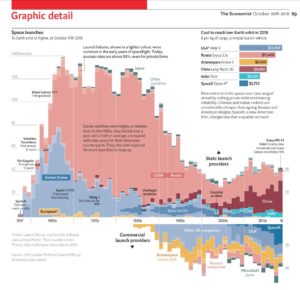
First old Lunar X Prize team has a launch scheduled. SpaceIL, the Israeli team, has a planned Jan 2019 launch on a Falcon9 rocket and a Feb 13, 2019 landing for its 1300 lb spacecraft on the moon after a 2 month trip. It has been a $88 million effort so far, with $27 million coming from an Israeli billionaire investor. The $30 million X prize ended in March this year with no winners or even launchers.
Mars dust storm is over but Opportunity has not yet communicated. NASA will try daily pings for 2 more weeks and then shift resources to Insight. Now that dust has cleared the atmosphere, Opportunity’s solar panels might still be coated with it. Temperatures will now drop lower at night which might freeze the electronics. The hunkered down rover has been seen from orbit but appears very dusty. By end of September it has been 112 sols without communication, since June 2018. Starting the end of October they will listen for it until end of January 2019. Windy season coming March 2019 and that might blow off some of the dust. Now that the dust has cleared, nights will be colder and more of a risk to the rover. Opportunity is funded thru FY 2019.
To celebrate the anniversary of the moon landing, NASA created this video of Lunar Reconnaissance pictures set to the music of Clair de Lune by Claude Debussy. Also a good video of how the moon formed and why it looks like it does is lower down on the above site.
Professional odds maker, “MyBookie” says SpaceX has a 75% chance of sending humans to Mars first. Technically speaking the odds are -300 which means bettors would have to lay down $300 to get their money back with an additional $100 if the bet pays off. Blue Origin, run by Jeff Bezos, is runner-up with a 20% chance. The stated odds are +400, which means a $100 bet will pay your money back plus another $400 if the proposition comes true. Coming in with even longer odds are Boeing (+500 or 17%), the yet to be created Space Force (+2000 or 5%), Russia (+4500 or 2%), NASA (+6000 or 1.6%), China (+8500 or 1.2%) and the United Arab Emirates (+20,000 or .5%).
For a lighter story, you never know how much that rock is worth. A rock used by Michigan family is a meteorite. It is worth about $100,000. The 23 lb rock came into family in 1988 when they bought a farm. It is the 6th largest meteorite ever found in Michigan.
Upcoming events are: the landing of Insight on Mars 11/26/18, Osiris-Rex encounter with the asteroid Bennu 12/3/18; and New Horizons buzzing past Kuiper Belt object Ultima Thule on 1/1/19.
For the final topic we watched the DVD of the tour of Yerkes Observatory. It’s sad that the observatory closed October of this year. I never visited the place. Hopefully they can find some funding arrangement that will keep it open on some sort of limited basis.
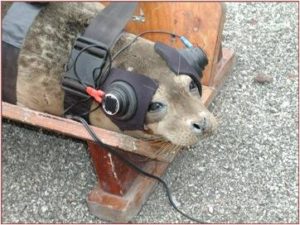
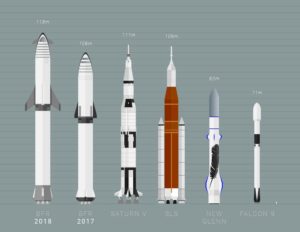
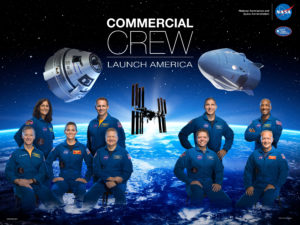
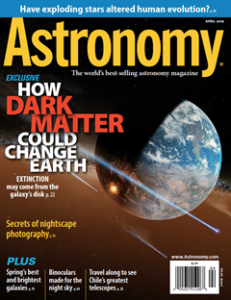
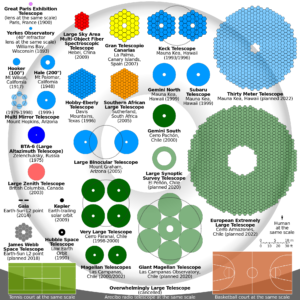
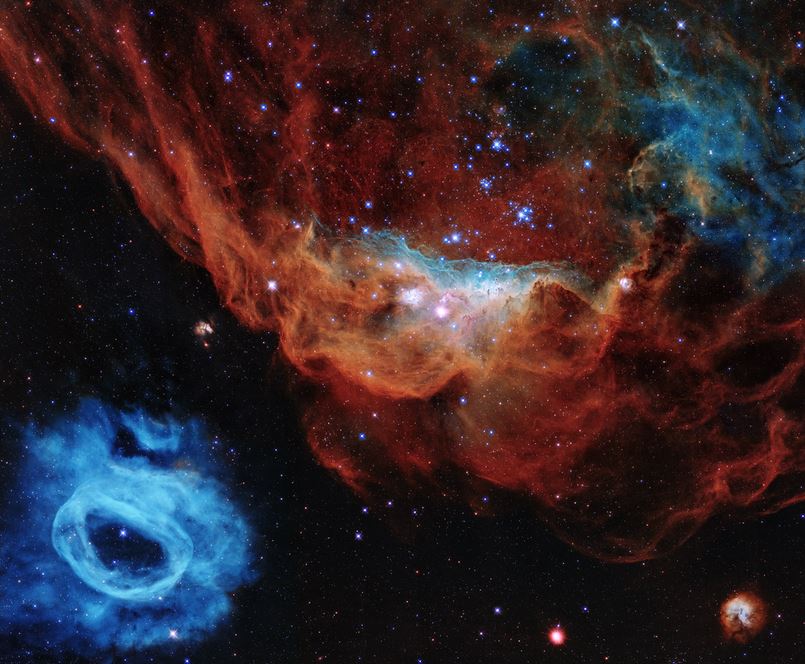
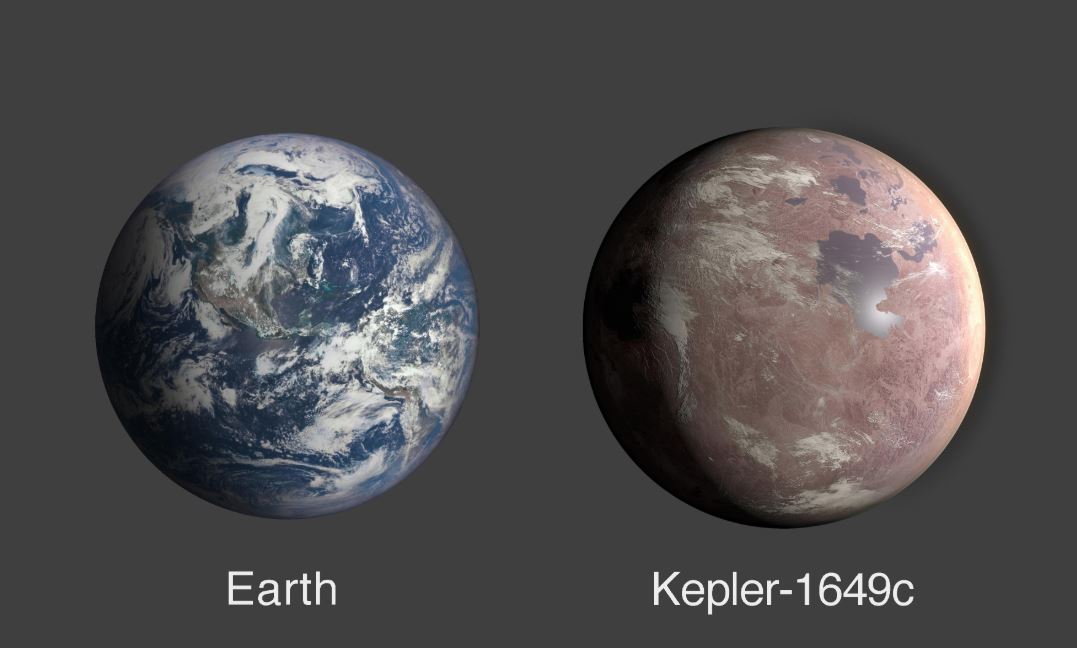
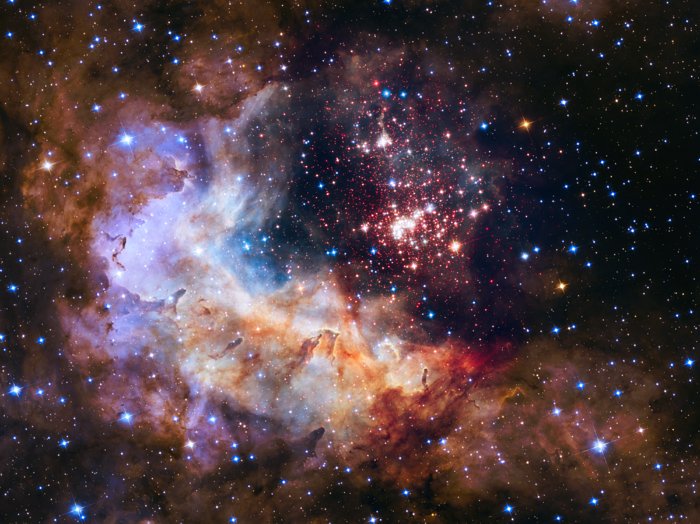
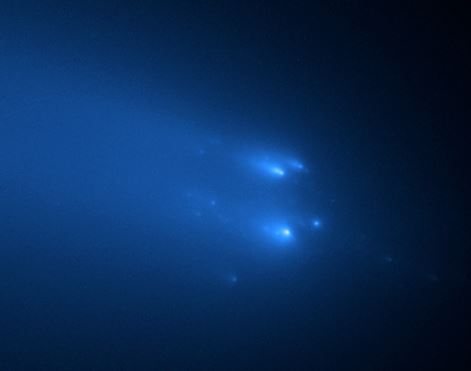
One Response
Wonderful read, as always Jim. Thanks again for all the work you put into these.
Comments are closed.